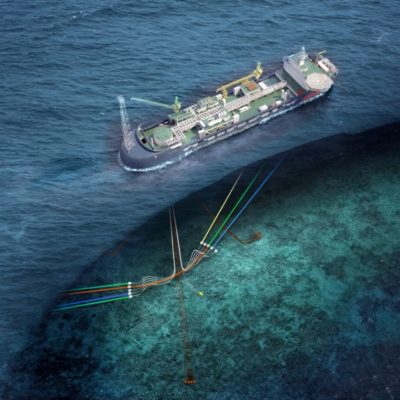You’d think with a title like that this would be a blog about the Federal government and their approval of the Bay du Nord deepwater oil and gas project and you’d be right. But you would also be wrong. While I am very much wanting to wax eloquently about the most significant upstream oil project approval in Canada in more than a decade, I have realized that I am nowhere near well enough informed about this particular one to share an opinion. So I am doing the unprecedented – I am turning to an actual expert to lay out why this project is so significant.
Rory Johnston is a former big bank senior economist, commodity and energy expert and the founder and publisher of Commodity Context, a substack newsletter that I subscribe to (and you should too! In fact, why aren’t you subscribing?). He uses his platform to present accessible data driven analysis of the oil and gas industry in Canada and leverages his extensive knowledge and background to demystify the commodity industry for his readers.
He recently published an excellent article about the Bay du Nord project and has graciously agreed to me reposting it here. I certainly appreciate the assist and hope that you all will enjoy it as well. All words after this paragraph are Rory’s not mine, the link to the article is also below so that if you want, you can see all the pretty pictures. Don’t forget to subscribe as well when you are on the page.
Article Link – Click Here
Sea Change for Canadian Offshore
Rory Johnston
Bay du Nord approval rewrites the outlook for Newfoundland and Labrador oil production
- A game-changer for Eastern offshore, the proposed C$16bn, 200 kbpd Bay du Nord project off the coast of Newfoundland and Labrador received environmental approval (with its ultra-low upstream emissions profile) from the federal government last week.
- If operator Equinor decides to go ahead with the investment, it will be Canada’s first greenfield upstream oil and gas mega project sanctioned since Fort Hills (aka in nearly a decade).
- Bay du Nord would also completely rewrite what is currently a steadily declining offshore production outlook, providing substantial economic and fiscal dividends for Newfoundland and Labrador.
- This “basin-opener” project holds massive growth potential as Canada’s first remote deepwater asset, marking the first step into a brand-new production basin and substantially de-risking further exploration.
When we talk about “Canada’s oil industry”, people most often think of Calgary and Fort McMurray. But there are actually three distinct oil and gas industries in Canada, in order of attention received: 1) Albertan oil sands, 2) Western Canadian onshore, and 3) Eastern Canadian offshore, which includes oil off the coast of Newfoundland and Labrador and natural gas off the coast of Nova Scotia. Now, it’s in this chronically underdiscussed offshore sector that we’re seeing the most exciting industry development in ages: the potential for Canada’s first greenfield upstream oil megaproject in nearly a decade.
The Canadian oil & gas industry got a breath of fresh air last week when the federal government gave the environmental go-ahead for the C$16bn, 200 thousand barrel per day Bay du Nord project. The project operator, Equinor, still needs to make a final investment decision (FID)—apparently coming sometime in the next two years with hopeful first production by late-2028—but this approval represents a clearing of the largest hurdle and markedly increases the odds of said decision. The project would be an absolute boon for the province of Newfoundland and Labrador, reversing an industry outlook marred by steady production declines from legacy fields and opening a brand-new basin to additional related exploration.
This past week, federal Environment Minister Steven Guilbeault announced that, after 4 years of consideration, the Impact Assessment Agency of Canada determined that the Bay du Nord project is “not likely to cause significant adverse environmental effects when mitigation measures are taken into account.” The federal government concurs with the recommendation, and he highlighted that “the Bay du Nord Development Project may proceed, subject to some of the strongest environmental conditions ever, including the historic requirement for an oil and gas project to reach net-zero emissions by 2050.”
The proposed Bay du Nord project, first discovered in 2013 and located in the Flemish Pass 500 kilometers off the coast of St John’s, would be Canada’s first remote deepwater project, further offshore and in much deeper water—like, 1,170 meters vs. 80-100 meters—compared to the Jeanne d’Arc Basin that hosts the province’s four current oil-producing assets.
The project will leverage a floating production storage and offloading (FPSO) vessel that will connect to infrastructure constructed on the ocean floor. The FPSO will connect to and extract oil from at least 6 sub-fields via tie-back: Bay du Nord, Bay du Verde, Baccalieu, Harpoon, Cappahayden, and Cambriol. Two further exploratory wells will be drilled at Sitka and Cambriol Central later this year and could be integrated into the project if viable, further bolstering the project’s growing base of recoverable reserves. Cenovus Energy is Equinor’s partner in the Bay du Nord discoveries, and BP is a partner on two of the sub-fields.
Even before additional exploration, I’ve now heard from reliable sources that the estimated total recoverable reserves in place are in the 800 million-to-1-billion-barrel range—well above the initially suspected 300 million barrels that remains the only real number run in all the major news stories. For Newfoundland and Labrador, this project alone is expected to produce oil for between 20 and 30 years with peak production of around 200 kbpd at a breakeven price of less than US$35 per barrel according to Equinor. Expected upstream GHG emission intensity is as low as 8 kg/bbl—about one-tenth that of the oil sands—with Equinor boasting that it “has the potential to produce the lowest-carbon oil in the country.”
Righting a capsized production forecast
It’s hard to overstate the value of the Bay du Nord project, if ultimately sanctioned by Equinor, for the East Coast offshore industry. Newfoundland and Labrador’s offshore oil production currently sits at around 250 thousand barrels a day split between four shallower water projects (see top chart). If Bay du Nord reaches FID and enters service at the end of the decade as is currently planned, the deepwater project will roughly double Canadian offshore oil production relative to the forecasts from the Canadian Energy Regulator and the Canadian Association of Petroleum Producers, which both foresaw steady declines prior to the approval.
It’s also a turnaround for the economic and fiscal trajectory of Newfoundland and Labrador thanks to the $3.5bn in estimated provincial royalty income. Oil and gas extraction accounts for more than a quarter of Newfoundland and Labrador’s GDP—an even larger share of GDP than in Alberta, which most typically think of as Canada’s most energy-intensive province.
In terms of Newfoundland and Labrador’s brightened outlook, the Bay du Nord project marks not only a fresh base of decades-long production, but holds the potential to open up a completely new production region. This “basin-opener” will substantially de-risk further exploration, by Equinor and others, and even brings in a new corporate player to Eastern Canadian offshore (i.e., BP, who is a partner on the Cappahayden and Cambriol discoveries).
Conclusion
Bay du Nord project approval announcement is a breath of fresh air for the Canadian oil and gas industry oil production and a potential turning point for the province of Newfoundland and Labrador. If ultimately sanctioned by the companies involved, the project will provide a massive boost to provincial GDP, windfall for the coffers of the provincial treasury, and open the door for additional offshore exploration and production in the area. This announcement has come at a time when the energy security conversation continues a shift in favour of more domestic oil and gas production. The ultra-low upstream emissions profile of the project and commitment to reach net-zero by 2050 should provide some salve to those who don’t typically support hydrocarbon development.









